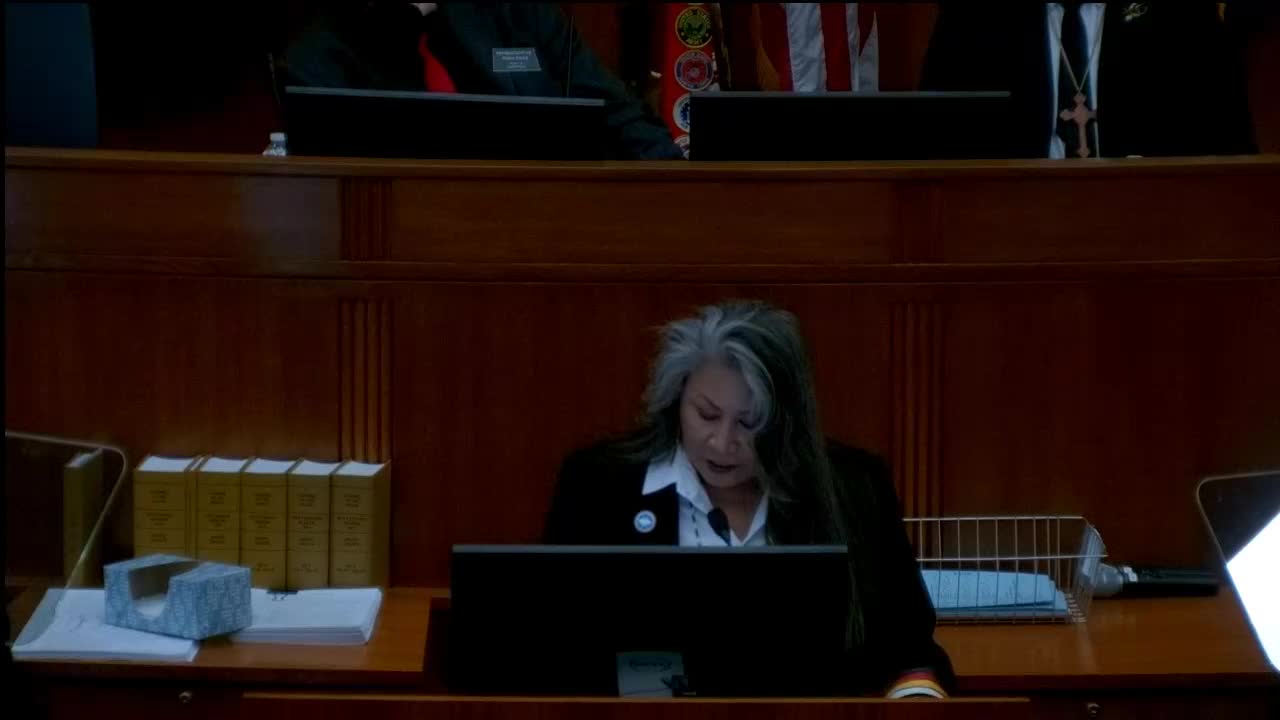Standing Rock Sioux honor Albert Grass with dedication of new memorial bridge
January 07, 2025 | House of Representatives, Legislative, North Dakota
This article was created by AI summarizing key points discussed. AI makes mistakes, so for full details and context, please refer to the video of the full meeting. Please report any errors so we can fix them. Report an error »

The Tribal-State Relationship Address held on January 7, 2025, in North Dakota highlighted the enduring connection between the state and Indigenous communities, particularly the Sioux Nation. The address emphasized the shared history, traditions, and language that unite these groups, tracing back to the 1851 treaty that defined the original territory of the Great Sioux Nation, which spanned from Minnesota to Montana and beyond.
A key focus of the address was the historical context of the Sioux people's struggles and resilience. The speaker reflected on the sacrifices made by their ancestors, including the wars fought to defend their homeland and the significance of the 1868 Great Sioux Nation Treaty, which aimed to ensure peace and protect their lands. Today, the Sioux Nation's territory has been reduced to approximately 2.3 million acres, straddling the borders of North and South Dakota.
The address also celebrated the achievements and ongoing commitment of the Standing Rock Sioux Tribe to preserve their culture and promote economic development, education, and community engagement. The speaker expressed pride in the community's strength and determination to honor their past while looking toward the future.
A significant moment in the address was the acknowledgment of Governor Doug Burgum's signing of a bill to dedicate the Cannonball Bridge as the Albert Grass Memorial Bridge. This dedication honors Albert Grass, a Native American who served in World War I and made the ultimate sacrifice for his country despite not being a U.S. citizen at the time. The speaker, who identified as Grass's nephew, underscored the importance of remembering such heroes and their contributions to the nation.
Overall, the meeting underscored the importance of recognizing and strengthening the relationship between the state and Indigenous communities, fostering a sense of unity and shared purpose moving forward.
A key focus of the address was the historical context of the Sioux people's struggles and resilience. The speaker reflected on the sacrifices made by their ancestors, including the wars fought to defend their homeland and the significance of the 1868 Great Sioux Nation Treaty, which aimed to ensure peace and protect their lands. Today, the Sioux Nation's territory has been reduced to approximately 2.3 million acres, straddling the borders of North and South Dakota.
The address also celebrated the achievements and ongoing commitment of the Standing Rock Sioux Tribe to preserve their culture and promote economic development, education, and community engagement. The speaker expressed pride in the community's strength and determination to honor their past while looking toward the future.
A significant moment in the address was the acknowledgment of Governor Doug Burgum's signing of a bill to dedicate the Cannonball Bridge as the Albert Grass Memorial Bridge. This dedication honors Albert Grass, a Native American who served in World War I and made the ultimate sacrifice for his country despite not being a U.S. citizen at the time. The speaker, who identified as Grass's nephew, underscored the importance of remembering such heroes and their contributions to the nation.
Overall, the meeting underscored the importance of recognizing and strengthening the relationship between the state and Indigenous communities, fostering a sense of unity and shared purpose moving forward.
View full meeting
This article is based on a recent meeting—watch the full video and explore the complete transcript for deeper insights into the discussion.
View full meeting
